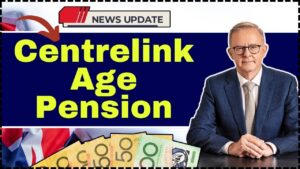Starting in 2025, the Cost of Living Relief package will be expanded by the Australian government. Starting in July 2025, the Relief package will be designed and intended for the support of economically pressed individuals and families in the blighted provisions of violence, inflation, and everyday living cost increases in housing, expenses, and shortages. Below will include detailed and important provisions of the package, the available support for these Australians, the eligibility requirements for this year, and and other available supports and accommodations.
New Reforms and Targeted Population
Pensioners, students, single parents, and people working part-time will also be included in the Cost of Living Relief package. Additional one-off payments as well as Continuous Support payments will be provided for people in the unemployed and welfare recipient populations. At the end of the day, the goal of these Support packages is Stress Relief.
Increased Payment Amounts
Due to the new cost of living arrangements, payments have also increased for some key groups. Pensioners and those receiving JobSeeker, Youth Allowance, Disability Support Pension, and Parenting Payments receive additional payments as supplements every fortnight and as top payments in a lump sum, depending on their status. For some, these payments actually quadruple the relief bonuses that were distributed in 2024, which speaks to the increased attention being paid to living costs and economic fairness.
Form Data Table
| Category | New Benefit (AUD) | Start Date |
|---|---|---|
| Pensioners | $300 one-off | July 2025 |
| JobSeekers | $200 supplement | July 2025 |
| Families | $150 per child | July 2025 |
Utility Bill and Rent Relief
One of the new offerings in the 2025 plan is the expansion of the relief programs for utilities and rents. Eligible households can claim additional discounts on their electricity, gas and water bills, and rebates will be applied automatically to their utility accounts. Renters, especially those in expensive housing areas, can access increased rent assistance payments which provide a higher ceiling of payments than in previous years to help cushion the impact of rising rents.

Automation of Payments and Streamlined Applications
To achieve a balance between support accessibility and support efficiency, we’ve automated eligibility checks for the expanded package. Most Centrelink and MyGov customers will only need to confirm or change their information; payments for current benefits recipients will be processed automatically for most payments. There will be some Australians, such as new applicants or temporary residents, who will still need to lodge updated forms to capture new entrants and changing circumstances.
Revised Rules and Changed Eligibility
The criteria to qualify for relief previously available has shifted. Increased income and asset thresholds mean more part-time workers and single-income households will be eligible for relief payments, while the upper income earners will be ineligible for payment relief. This shift will be accompanied by more stringent checks to ensure that duplicate claims or fraud in the system will be prevented, and the information provided will be subjected to agency cross checks.
Most Common Questions
Q1: Who will get the new cost of living payments automatically?
People who receive pensions or the main welfare benefits, and all Centrelink information is current will, as a rule, get the payments automatically.
Q2: Are self-employed or gig workers included?
Yes, recent changes allow low earning gig workers and part-time workers to access certain relief payments as long as their income is below the new thresholds.
Q3: How do renters apply for the enhanced rent relief?
Most applicants can update their details via MyGov or Centrelink portals. New applicants might be asked for current rental agreements or other proof of residence.


